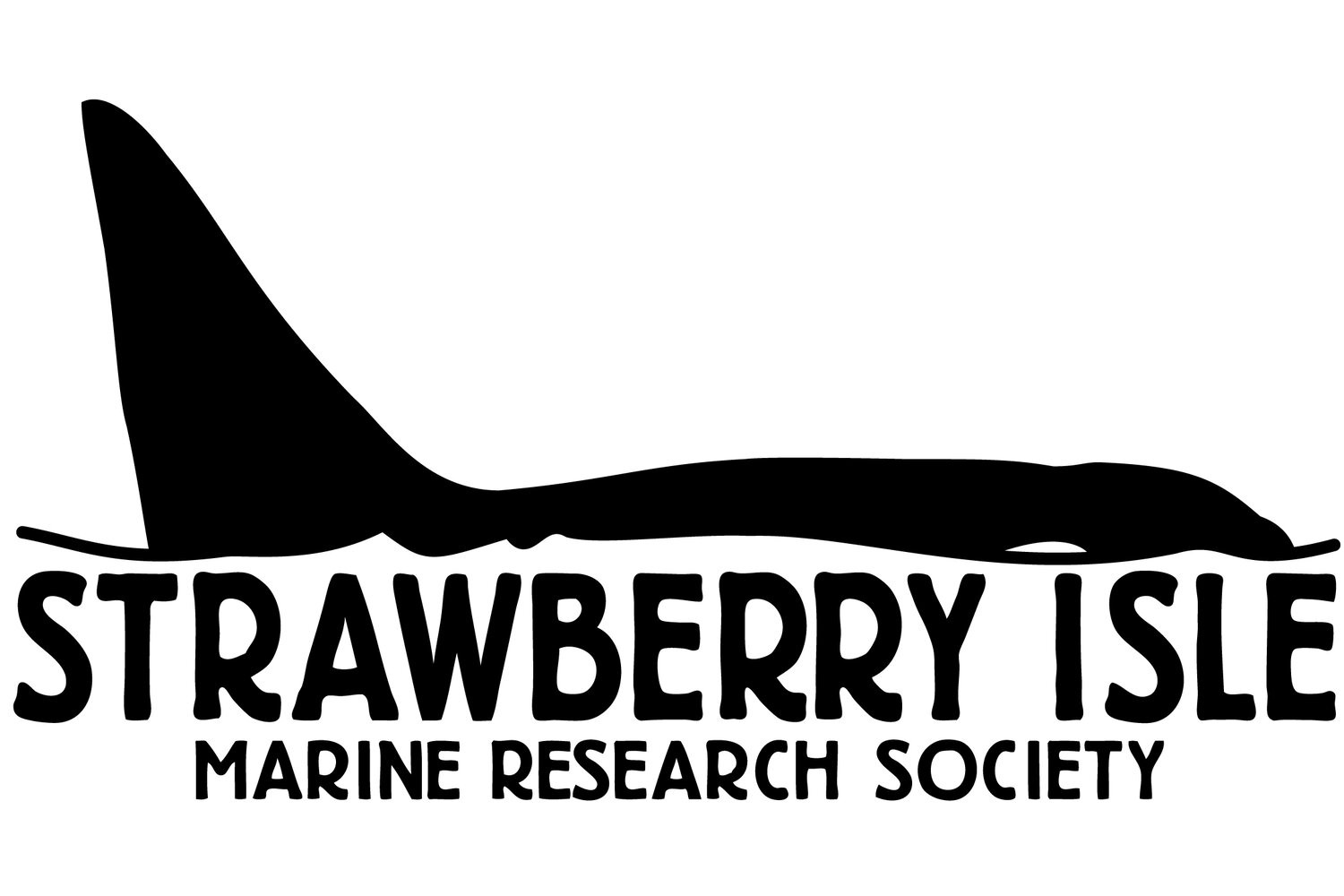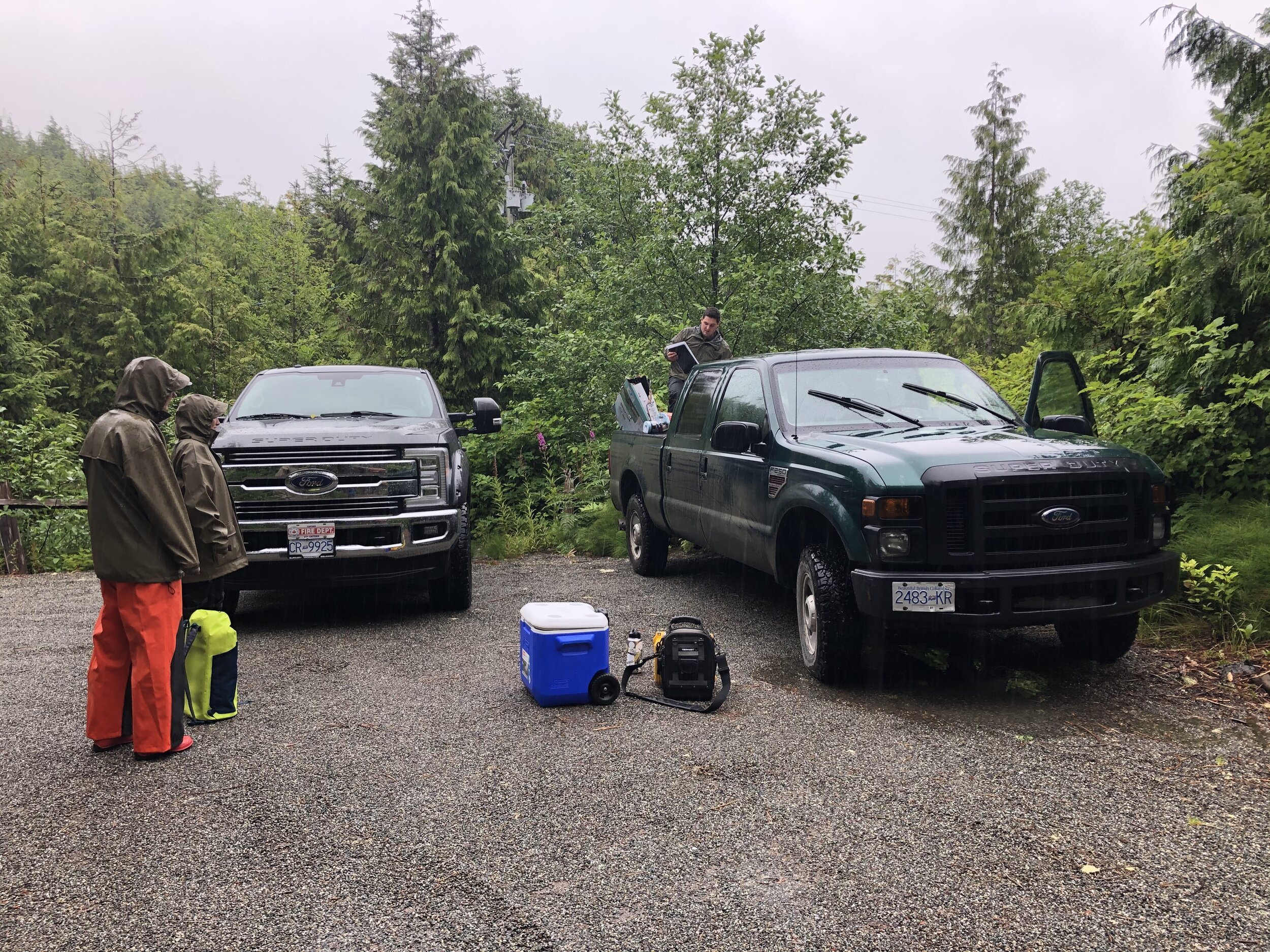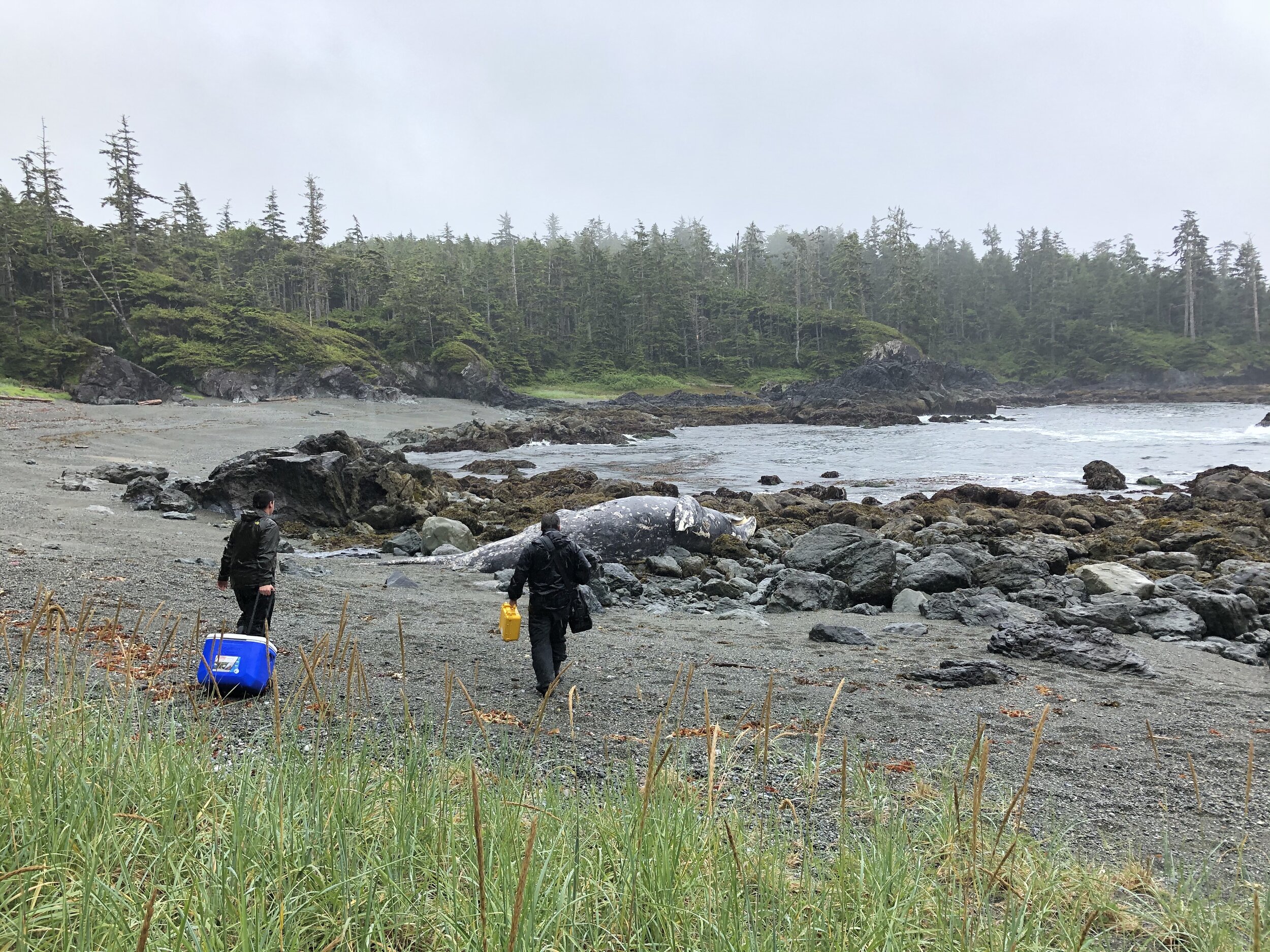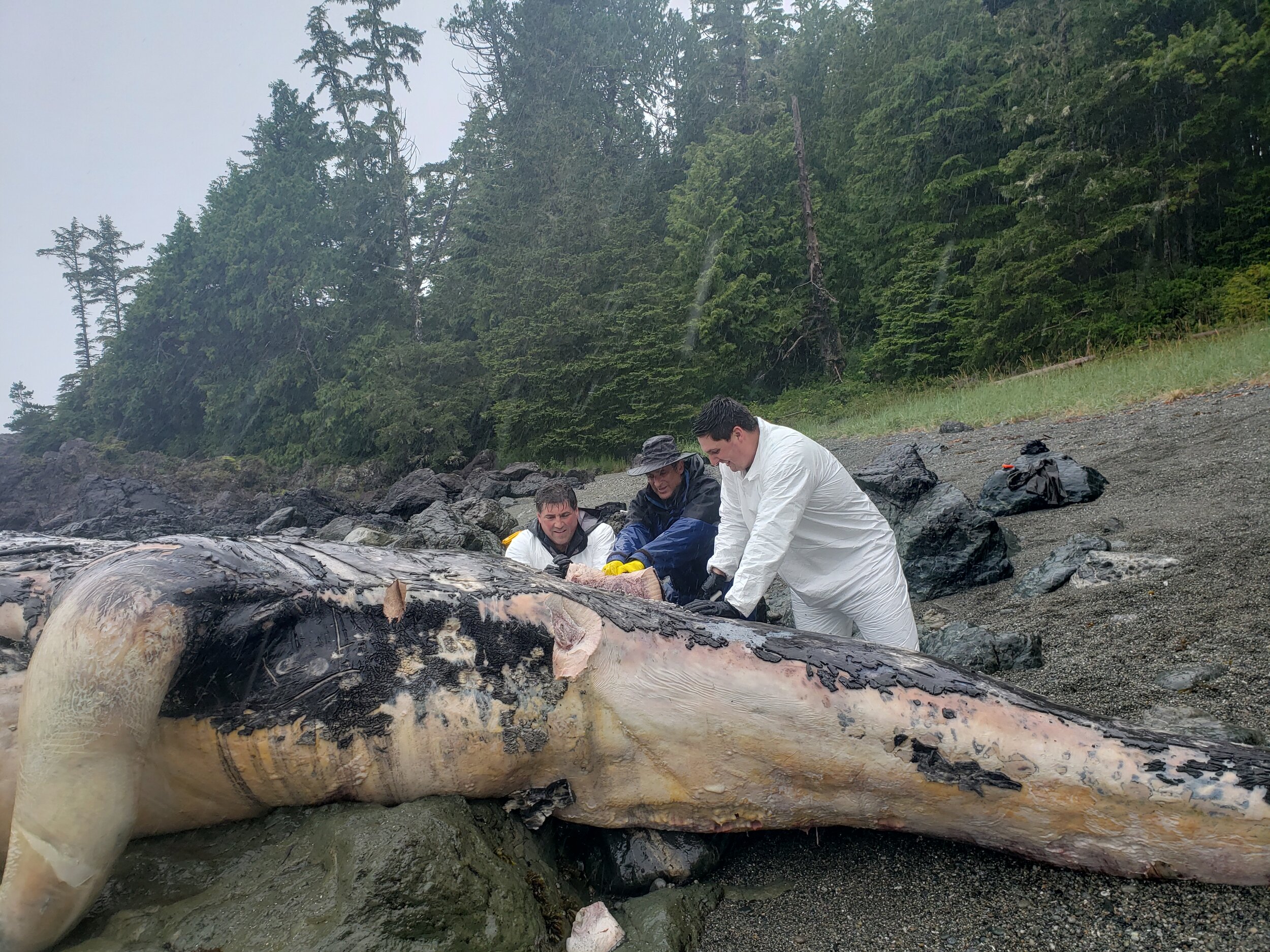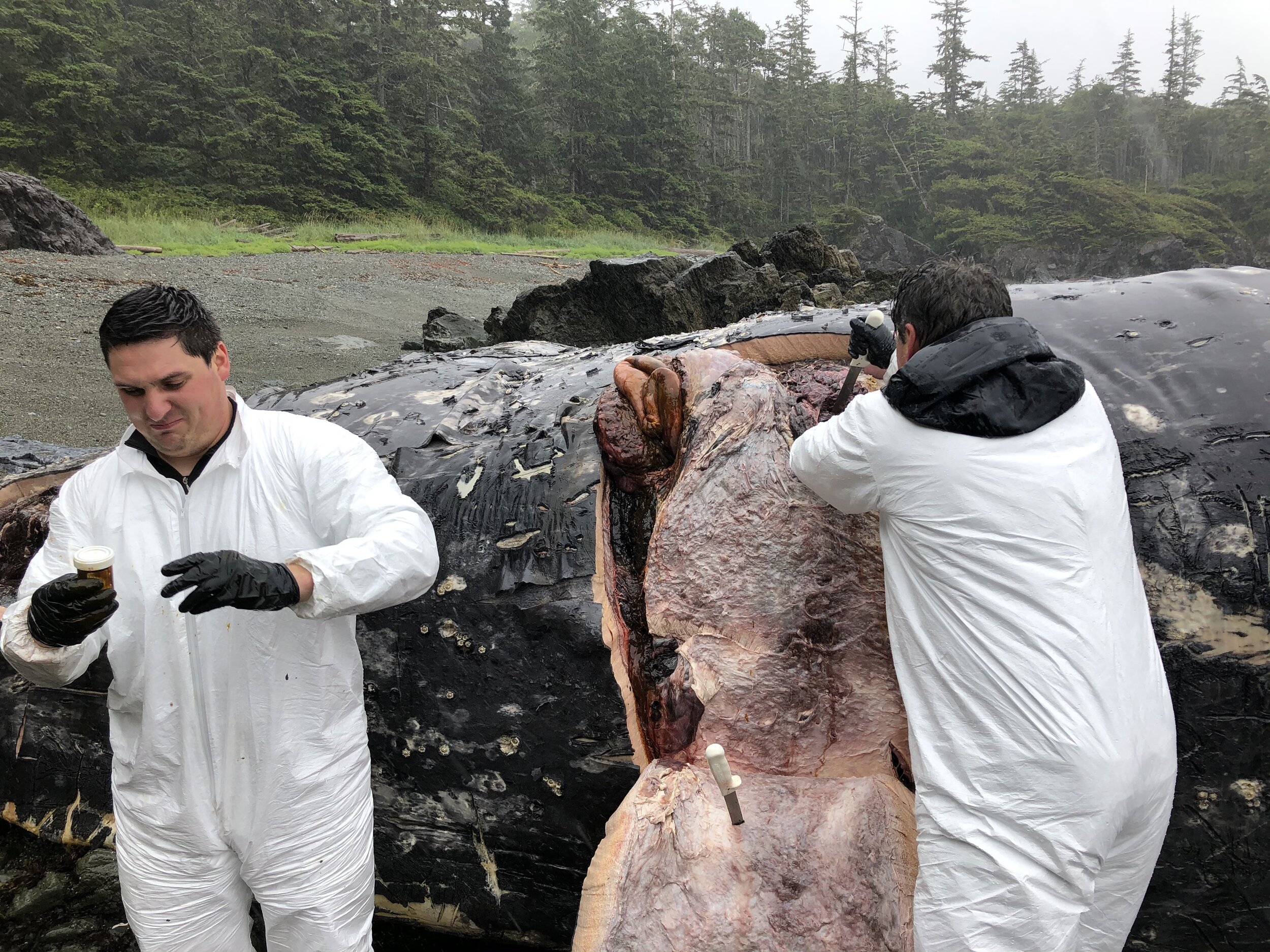Elbow Deep in a Gray Whale
/It is July 11, 2020 on the west coast of Vancouver Island and our temperate rainforest home is living up to its name. The summer solstice has come and gone but I still leave my house donned in rubber boots, a toque and heavy duty rain gear from head to toe. In the Alberni-Clayoquot region we live by the idiom "there is no bad weather, only bad clothing", otherwise we would hardly leave our houses at all.
It is Saturday morning and I would normally not rush out of my house on the weekend, into a rain storm without even a sip of coffee, but I have just received a very exciting call to work. Today, I get to assist in my first necropsy. The local coast guard has reported that a gray whale carcass has washed ashore somewhere near Ucluelet and I am heading out with a small team to take samples and try to determine the cause of death.
Strawberry Isle Marine Research Society (SIMRS) is a part of The British Columbia Marine Mammal Response Network (BCMMRN). The BCMMRN is a collaborative program - led by DFO - between government agencies, research, conservation and outreach groups, wildlife rescue organizations and BC citizens. As a member of the BCMMRN, SIMRS will respond to marine mammal incidences like entanglements, vessel strikes, and necropsies like the one I am heading to today.
Karyssa, Sydney, & Taylor packing equipment (left), Taylor and Paul headed towards whale (right). Photos by John Forde.
I meet our small team of 5 to gather gear, laugh about the rain and begin our journey into the forest to reach a remote beach where a gray whale has found its final resting place. Our team consists of myself, Karyssa Arnett (SIMRS Director of Operations), John Forde (SIMRS Board Member), and our necropsy experts Paul Cottrell and Taylor Lehnhart of Fisheries and Oceans Canada. As we head into the forest on a gravel road, we end up at a narrow unmarked trail that winds further into the rainforest and disappears into the shadows. We re-adjust our gear and prepare ourselves to clumsily clamber over roots and branches with coolers, clip boards and dry sacks brimming with equipment.
I know we must be nearing the beach as I inhale through my nose and breathe in the unmistakable smell of decaying flesh. As the curtain of trees opens we step out of the forest and onto a small pebble beach. An enormous gray whale lays before me, its body stretched throughout the intertidal zone. The whale is an adult male and is the first one I have ever seen out of the water. I find a new appreciation for the size, beauty and power of these animals as I walk a circle around the body, trying to memorize all the small details I would not normally be able to see up close.
Gray Whale - Photo by Sydney Dixon.
We unpack our gear and get to work - first measuring the animal and then taking samples of baleen, blubber, skin and barnacles. As Taylor and Paul dissect the animal, we bag the samples, label them and store them safely in the cooler for the veterinary pathologist to analyze back at the lab. Now it is time for the messy work to really begin as we prepare to open a window into the whale to collect organ samples. Taking as many samples as we are able to will help the veterinarian to determine how the animal may have died and its body condition prior to death. Performing necropsies, like this one, may help us better understand the challenges gray whales are facing in BC.
As Taylor makes the first deep cut past the blubber and into the body cavity I hear a whooshing noise, like air being let out of a massive balloon. Then comes a new array of unforgettable smells as gas pours out of the carcass. Large animals have lots of gas and, as they decompose, these gasses expand. As more cuts are made the trapped gasses escape, ringing the dinner bell for any scavenging animals near by and saturating our clothes and hair in the pungent aroma.
"At least the constant deluge of rain will help to wash us clean as we work", I think as my teammates reach elbow deep into the whale.
Top: Paul, John, and Taylor cutting a ‘window’ into the starboard side of the whale - photo by Karyssa Arnett. Middle: Taylor makes a face while holding the feces sample while Paul dissects the kidney - photo by John Forde. Bottom: Paul & Taylor cutting second window towards the heart of the whale - photo by Karyssa Arnett.
Samples are taken of the heart, lungs, kidneys, intestines and fecal matter for analysis. Though this may sound an unpleasant task for a wet Saturday morning, to a biologist, this is a very exciting opportunity.
As we finish, pack up, and wash ourselves off I look overhead to see bald eagles and ravens circling overhead, waiting for us to disappear back into the trees. As I look up my eyes squint and I realize the rain has stopped and the sun is beginning to pear through the cloud cover. We chuckle to ourselves at Mother Nature's timing as we put our backpacks on. I look back one last time before we head back onto the trail away from the beach. I feel sad but also thankful for this whale. I hope that we are able to learn something from this individual that may help us to better understand and protect the rest of our gray whale population in British Columbia.
~ Sydney Dixon, SIMRS Education & Research Assistant
Sydney, John, Taylor, & Paul (left to right) next to the completed whale necropsy - photo taken by Karyssa Arnett.
Our sincerest gratitude goes out to Paul Cottrell, Taylor Lehnhart, and the rest of our amazing team members of the BC Marine Mammal Response Network for their valuable work in rescue, response, and rehabilitation of marine mammals along the BC coast. SIMRS is thankful to be part of this amazing network!
Click here to learn more about our role in the BC Marine Mammal Response Network and find out how you can take action in responding to marine mammal incidents.
Read more about action taken towards Grey Whale mortalities in the Tofino-Ucluelet Westerly News here.
If you see a marine mammal or sea turtle dead or in distress please:
Call 1-800-465-4336
Email DFO.ORR-ONS.MPO@dfo-mpo.gc.ca
OR radio VHF Channel 16
